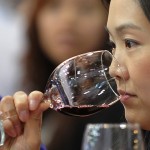Consumer Market Trends in China
Demand for packaged food has grown rapidly at the expense of loose products in recent years, driven by rising incomes, demand for convenience and quality and the development of modern retail structures. However, per capita expenditure remains extremely low by Western standards.
Dairy products was a particular area of growth, with sales up by 115% over the review period. This was partly due to efforts by the Chinese government to promote dairy products as healthier foods, and to encourage more calcium intake in diets.
Oils and fats represented the fastest growing sector within packaged food between 2000 and 2005, with growth of 160%. This was due to the further penetration of packaged vegetable and seed oil into inland and rural areas.
Baby food has benefited from an increase in average expenditure on children, due to the one-child policy. Growing penetration of milk formula into the rural market and the popularisation of dried and prepared baby food in urban areas underpinned growth of 80% in the five years to 2005.
Sales of soft drinks grew dramatically from a small base, fuelled by manufacturers’ marketing and promotional campaigns and product innovation. RTD tea and bottled water, in particular, benefited from improved consumer health awareness.
Alcoholic drinks have suffered from a negative image in the face of healthy eating trends, although beer, wine and imported spirits grew strongly over the review period at the expense of the much larger local spirits sector.
The household care and disposable paper products markets were boosted in 2003 as people became hygiene-obsessed in order to minimise the spread of SARS. This impacted sectors such as surface care and toilet products in particular.
The OTC market has been held back in the past by a strong preference in China for Traditional Chinese Medicines (TCM). However, the market for OTC products is burgeoning, due to increasing health consciousness in the light of SARS and bird flu, and the expansion of discount pharmacy chains offering self-selection.
Similarly, the market for cosmetics and toiletries is being fuelled by growing affluence, retail developments and exposure to advertising, as well as faster penetration and acceptance of new trends and products in less developed regions.
Skin care is by far the largest and most dynamic of all the cosmetics and toiletries sectors in China, with sales of US$3.6 million in 2005, and growth of 134% over the 2000-2005 period. Sales have benefited from the lowering of tariffs on imported brands following China’s entry into the WTO.
The smaller men’s grooming products sector achieved the most dramatic growth over the review period, of 142% in value. This was underpinned by growing awareness of personal grooming, as well as manufacturers’ emphasis on men’s skin care needs through television advertisements and print media.







![[Podcast] China paradigm #17: How to best engage consumers in China](../wp-content/uploads/2019/03/China-Paradigm-Podcast-17-150x150.jpg)







